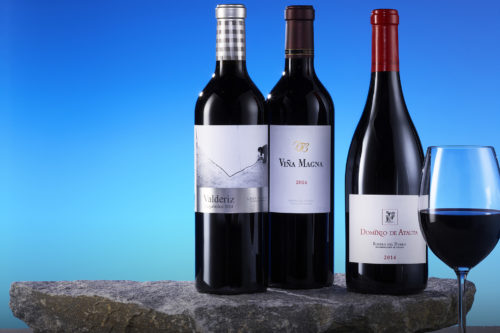How High Elevation Wines are Taking Spain to New Heights
One of the most important components in an elegant wine is the region’s terroir. Learn how elevation is being used to create a unique Spanish style.
By Michael Schachner
If you stand atop a plateau in the eastern reaches of the Ribera del Duero wine region, you might not realize that the Tempranillo vines you’re admiring are doing their thing at upwards of 3,000 feet elevation above sea level. Same goes for the old-vine Moscatel that grows in the mountains north of Málaga, or the Mencía in parts of Bierzo.
As winemakers throughout Spain strive to produce wines of greater elegance and freshness, elevation is proving to be the most important ingredient of regional terroir. From established regions like Rioja and Ribera del Duero to lesser-known places that include Somontano and the Canary Islands, high-elevation vineyards are where Spain’s leading winemakers seek the grapes they’ll choose to convert into liquid gold.
Here’s an in-depth look at the Spanish wine regions where elevation matters most, along with top-rated recommendations from some of the highest points in their respective regions.

Ribera del Duero
The Highest of ’Em All
It’s ironic that Ribera del Duero, one of the highest wine regions in Europe, looks mostly flat to the naked eye. The northern Castilian plateau is frequently described as barren, bleak and brutal, due to freezing winters and broiling summers. Elevations here run from about 3,500 feet, along Ribera’s eastern flanks, down to about 2,300 feet near Valladolid, which forms the region’s western border.
Hailing from near Aranda del Duero, the wines of Dominio de Atauta are the products of vineyards planted at nearly 3,300 feet. Atauta’s wines are typically dark and full bodied, but primed by the fresh acidity that’s a hallmark of high-elevation Tempranillo.
Just outside the city of Burgos, at the northern limits of the Ribera del Duero Denominación de Origen (DO), is where Dominio Basconcillos farms grapes at about 3,300 feet. Any impact from the namesake Duero River is negligible because of the northerly location. Instead, the key element of the terroir at Basconcillos is altitude, along with mixed soils that include clay, sand and chalk, which also impact the grapes and resulting wines.
“Basconcillos is a single, 50-hectare [roughly 125-acre] parcel with an average elevation of 1,000 meters [nearly 3,300 feet],” says Stephen Metzler, president of Classical Wines, which imports Dominio Basconcillos into the U.S. “When you step beyond the last row, you are outside the Ribera del Duero DO at its northern extreme.”
Most interesting about producers like Basconcillos and Atauta is that while their wines are powerful and concentrated, they aren’t overweight or out of balance. The altitude of the vineyards safeguards freshness.
Valderiz 2014 Juegabolos (Ribera del Duero); $50, 96 points. Toasty aromas suggest maple, along with a note of sawdust to accompany earthy berry scents. A rich, pure palate is intense but shows balance and comportment. Blackberry, cassis, peppery spice and integrated oak flavors are detailed, with a smooth finish. Drink this full-bodied wonder through 2028. Varietal Tempranillo; highest vineyards 2,625 feet. Regal Wine Imports Inc. Editors’ Choice.
Click here to learn more about Valderiz
Click here to learn more about Valderiz 2014 Juegabolos
Click here to read the original article

